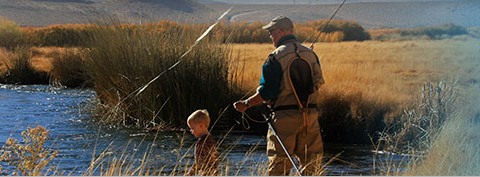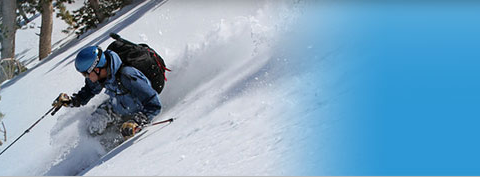Foot & Ankle
Anatomy
The foot and ankle in the human body work together to provide balance, stability, movement, and propulsion.
To know more about Anatomy click on tab below.
Maisonneuve Fracture
The ankle joint is composed of the distal tibia and fibula, and talus, connected by several soft tissue attachments. The ankle provides stability while adapting to the surface one walks on and allows for the ability to invert, evert, plantarflex, and dorsiflex the foot.
To know more about Maisonneuve Fracture click on tab below.
Lateral Process Fracture of the Talus AKA Snowboarder's Fracture
"Snowboarder's fracture" is a colloquialism commonly used to describe a fracture of the lateral process of the talus. The talus is a bone in the ankle that sits between the lower leg bones and the heel bone. A fracture of the lateral process is rare in the general population and is fifteen times more common in the snowboarder population.
To know more about Lateral Process Fracture of the Talus AKA Snowboarder's Fracture click on tab below.
Peroneal Tendon Injuries
The peroneus longus and brevis are muscles which begin high on the outer aspect of the lower leg (near the knee) and become tendons as they approach the ankle. Together they serve to move the foot inward and outward and help stabilize the ankle joint.
To know more about Peroneal Tendon Injuries click on tab below.
Achilles Tendon Rupture
The achilles tendon is a strong fibrous cord present behind the ankle that connects the calf muscles to the heel bone. It is used when you walk, run and jump. The Achilles tendon ruptures most often in athletes participating in sports that involve running, pivoting and jumping. Recreational sports that may cause Achilles rupture include skiing, tennis, football, basketball and gymnastics.
To know more about Achilles Tendon Rupture click on tab below.
Ankle Sprain
A sprain is the stretching or tearing of ligaments, which connect adjacent bones and provide stability to a joint. An ankle sprain is a common injury that occurs when you suddenly fall or twist the joint or when you land with your foot in an awkward position after a jump. Most commonly it occurs when you participate in sports or when you jump or run on a surface that is irregular. Ankle sprains can cause pain, swelling, tenderness, bruising, stiffness, and inability to walk or bear weight on the ankle.
To know more about Ankle Sprain click on tab below.
Plantar Fasciitis
Plantar fasciitis refers to inflammation or degeneration of the plantar fascia, a thick band of tissue that lies at the bottom of the foot. It runs from the heel bone to the toe and forms the arch of your foot. Plantar fasciitis is one of the most common causes of heel pain. It is most often seen in middle-aged men and women, but may also occur in those who are constantly on their feet such as soldiers.
To know more about Plantar Fasciitis click on tab below.
Flatfoot
Congenital flatfoot, also known as “fallen arches” or Pes planus, is a deformity in children’s feet in which the arch that runs lengthwise along the sole of the foot has collapsed to the ground or not formed at all. Flatfoot is normal in the first few years of life as the arch of the foot usually develops between the age of 3 and 5 years.
To know more about Flatfoot click on tab below.
Bunion Surgery
A bunion, also called a hallux valgus, is an enlargement of bone or soft tissues around the joint at the base of the big toe that results in the formation of a bump. The bone that joins the big toe with the first metatarsal bone thickens and enlarges, tightening the tendons, which in turn causes the base of the big toe to angle out resulting in a painful bony deformity.
To know more about Bunion Surgery click on tab below.
Ankle Ligament Reconstruction
A sprain is stretching or tearing of a ligament. Ligaments connect adjacent bones in a joint and provide stability to the joint.
To know more about Ankle Ligament Reconstruction click on tab below.
Ankle Arthroscopy
Ankle arthroscopy is a minimally invasive surgical procedure in which an arthroscope, a small, soft, flexible tube with a light and video camera at the end, is inserted into the ankle joint to evaluate and treat a variety of conditions.
To know more about Ankle Arthroscopy click on tab below.
Ankle Fusion and Ankle Joint Replacement
The ankle joint connects the leg with the foot and provides free movement to the foot. It is formed by connecting the bones of the lower leg, tibia and fibula, with the talus, or ankle bone.
To know more about Ankle Joint Replacement click on tab below.
Foot and Ankle Surgery
The foot is a flexible structure made of soft tissues, muscles, bones and joints. The forefoot comprises of five toes, the midfoot includes 5 bones that form the arch of the foot and the hind foot forms the heel and ankle.
To know more about Foot and Ankle Surgery click on tab below.
Click on the topics below to find out more from the orthopedic connection website of American Academy of Orthopaedic Surgeons.
- Achilles tendon
- Adult (Acquired) Flatfoot
- Arthritis of the Foot and Ankle
- Ankle Fractures
- Athletic Shoes
- Rotura de tobillo (Broken Ankle)
- Broken Ankle
- Bunions
- Clubfoot
- Corns
- Diabetic foot
- Flexible flatfoot in children
- Foot Pain
- Fracture of the Talus
- Fractures of the Heel
- Hammer toe
- Heel Pain
- Ingrown Toenail
- Intoeing
- Orthotic Devices
- Paediatric Thigh Bone Fracture
- Plantar fasciitis
- Posterior Tibial Tendon Dysfunction
- Rheumatoid Arthritis of the Foot and Ankle
- Sesamoiditis
- Sprained Ankle
- Stiff Big Toe (Hallux rigidus)
- Stress Fractures of the Foot and Ankle
- Toe and Forefoot Fractures





















